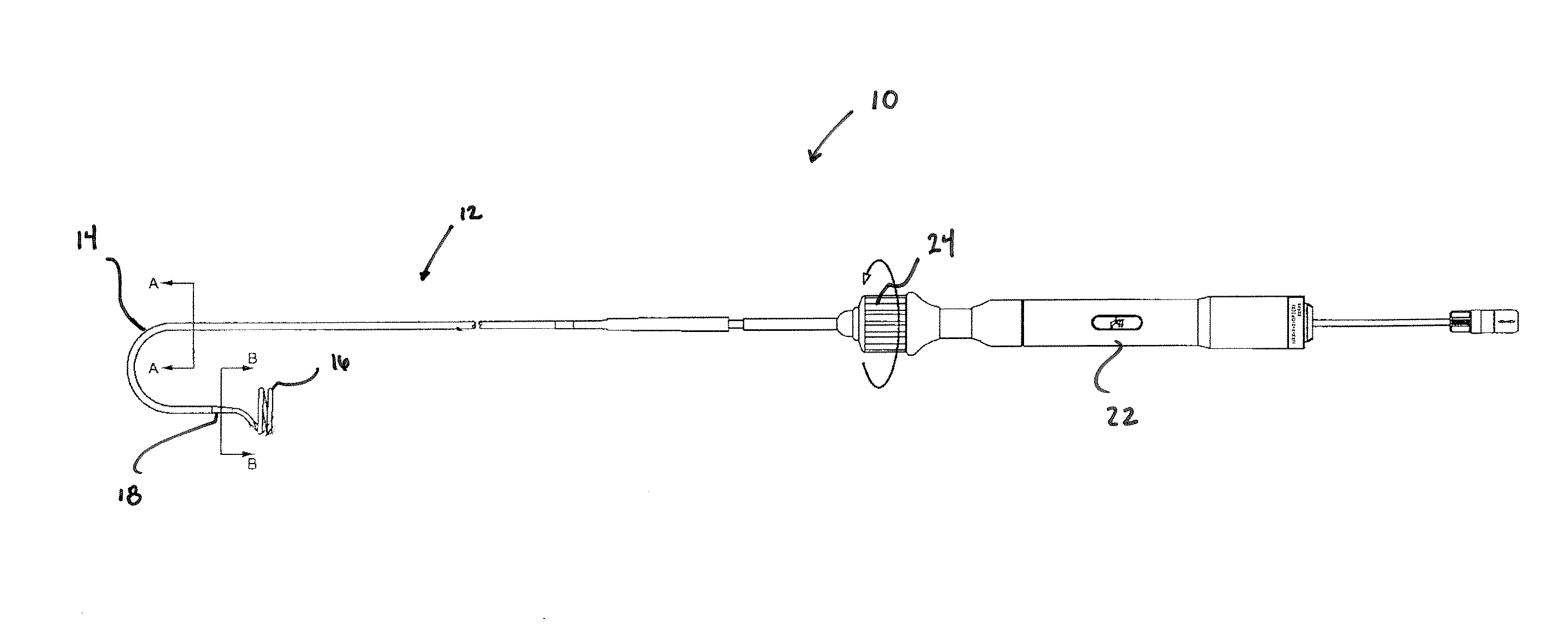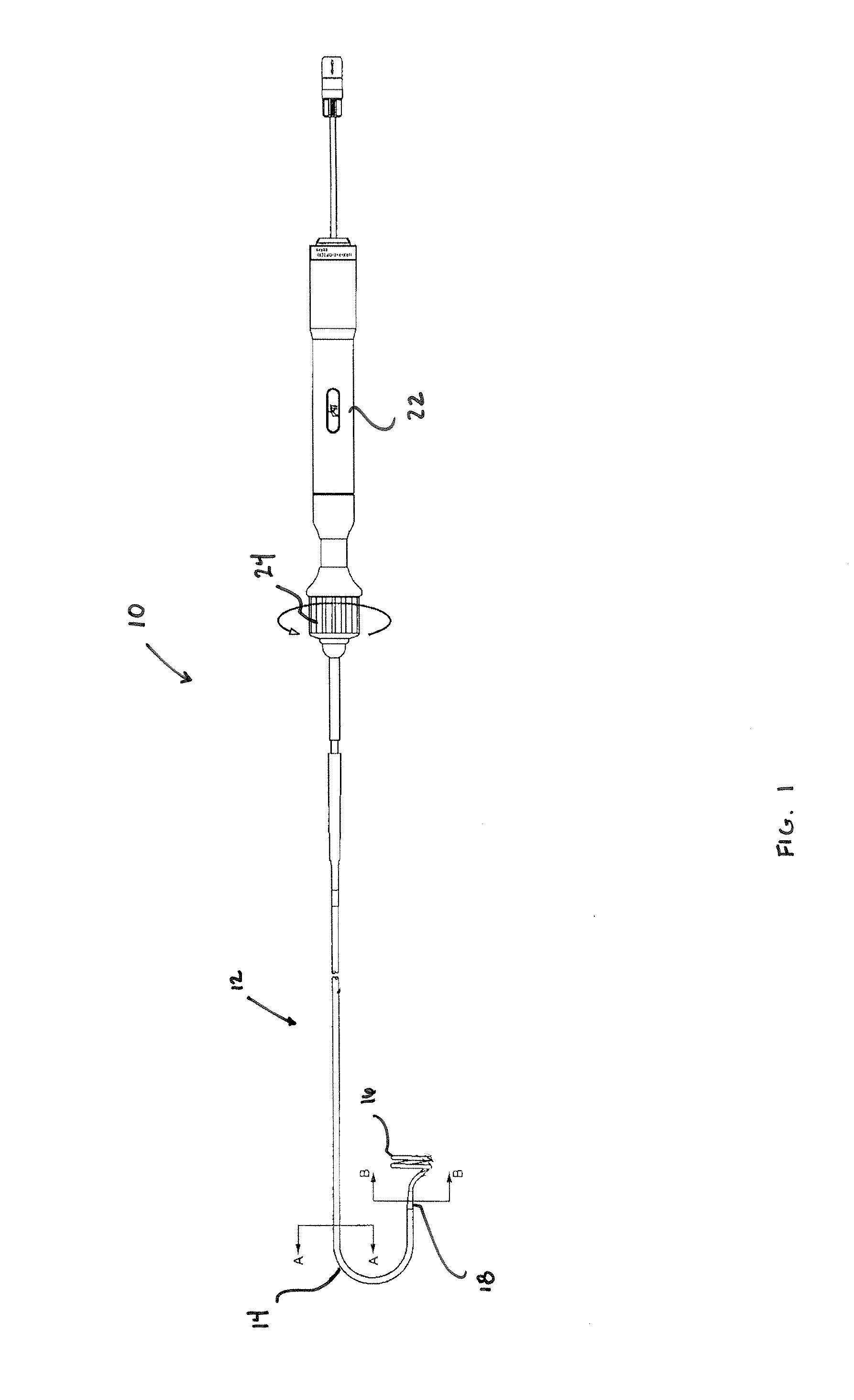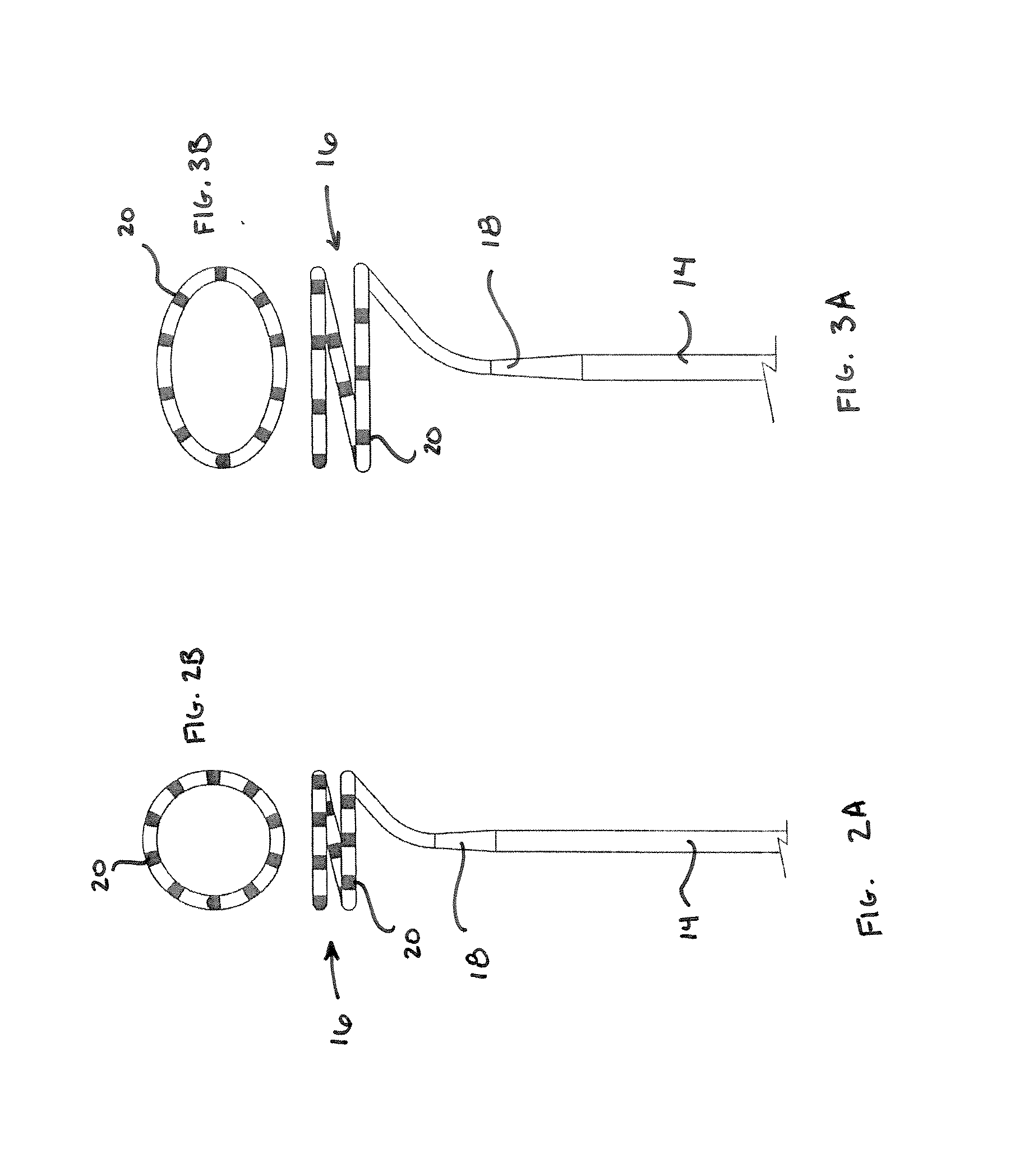Dual-Deflecting Electrophysiology Catheter
- Summary
- Abstract
- Description
- Claims
- Application Information
AI Technical Summary
Benefits of technology
Problems solved by technology
Method used
Image
Examples
Embodiment Construction
The present invention will be described with reference to an electrophysiology catheter utilized in cardiac electrophysiology studies, such as the Livewire Spiral HP™ and Inquiry™ Optima™ PLUS catheters of St. Jude Medical, Inc. It should be understood, however, that the present teachings may be applied to good advantage in other contexts as well.
Referring now to the figures, FIG. 1 depicts an electrophysiology (“EP”) catheter 10 according to a first aspect of the present invention.
EP catheter 10 generally includes an elongate catheter body 12, which, in some embodiments, is tubular (e.g., it defines at least one lumen therethrough). Catheter body 12 includes a proximal region 14, a distal region 16, and a neck region 18 between proximal region 14 and distal region 16. One of ordinary skill in the art will appreciate that the relative lengths of proximal region 14, distal region 16, and neck region 18 depicted in FIG. 1 are merely illustrative and may vary without departing from the...
PUM
 Login to View More
Login to View More Abstract
Description
Claims
Application Information
 Login to View More
Login to View More - R&D
- Intellectual Property
- Life Sciences
- Materials
- Tech Scout
- Unparalleled Data Quality
- Higher Quality Content
- 60% Fewer Hallucinations
Browse by: Latest US Patents, China's latest patents, Technical Efficacy Thesaurus, Application Domain, Technology Topic, Popular Technical Reports.
© 2025 PatSnap. All rights reserved.Legal|Privacy policy|Modern Slavery Act Transparency Statement|Sitemap|About US| Contact US: help@patsnap.com



